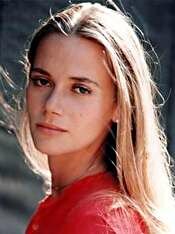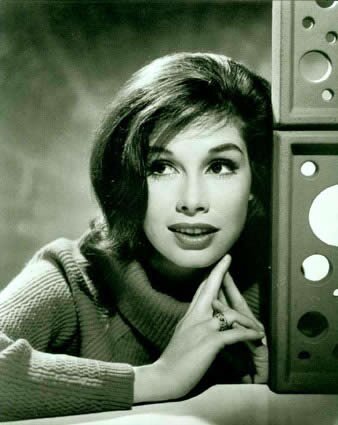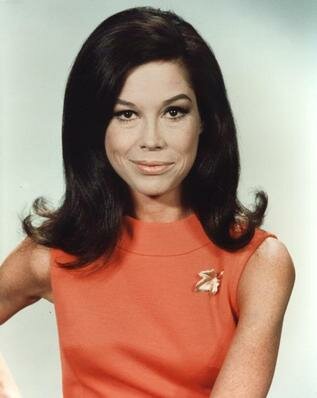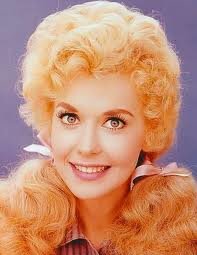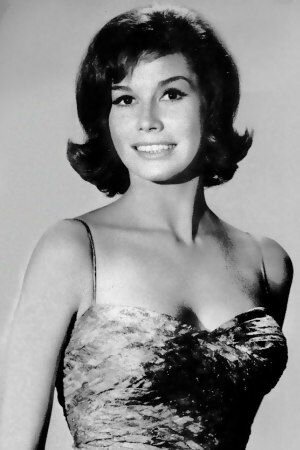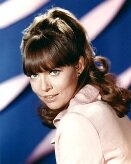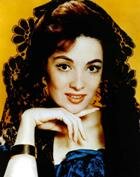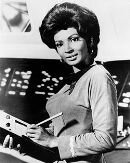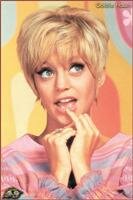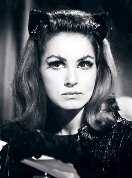As the youthful homemaker wife to husband Rob and mom to Richie, Laura was the first moden Kennedy-era woman seen on TV in the early 1960s. She was adorable and beautiful and optimistic, yet Laura could be a Nervous Nellie and Mary provided her character with perfect comedic timing.
Unlike the bland TV wives seen in previous series, Laura created a stir by wearing tight, mid-calf capri slacks during a time when all women on TV wore dresses.
Mary told a PBS interviewer Laura wore pants because it was realistic. "I was the first woman not to be in a floral frock in high heels vacuuming the living room."
Laura's pants helped start a trend in women's fashion, but as the series progressed the capris were seen less and less because sponsor surveys found that women viewers resented seeing Laura in tight pants.
Mary was recommended for the job by "Dick Van Dyke" producer Danny Thomas after series creator Carl Reiner auditioned 60 actresses for the role.
Thomas recalled Mary as the "the girl with three names," whom he had previously auditioned for the role as his daughter on his TV show. He told Mary at the time that she was a fine actress, but "with a [cute little] nose like yours, nobody would believe you're my daughter."
Thomas also remembered Mary for her unusual role as Sam the secretary in the TV series “Richard Diamond, Private Detective.” Mary's soft voice was heard and her beautiful dancer's legs were shown, but viewers never got a glimpse of her face.
Mary told the Archive of American Television that her “Sam” character “peaked the curiosity of men all over the world because they could imagine anybody they wanted, whatever their fantasy was in a woman. But it was an anonymous role for me because the producers asked me to keep my identity secret, they wanted to keep the mystery going.”
When Reiner called Mary's agent, she almost didn't return his call because she was so discouraged from auditioning for acting jobs she didn't get. But Mary thought that Reiner, an actor and writer on the Sid Caesar show, was the funniest, most handsome man on TV. Mary said one line at her audition and Reiner hired her.
“The Dick Van Dyke Show” was based on Reiner's experiences as a writer for Caesar's “The Show of Shows,” Reiner starred in the original pilot, called “Head of the Family.” CBS recast Van Dyke because it felt the show was too Jewish, too New York; the network felt the Petries, as WASPs, would have a broader appeal than an ethnic family. Van Dyke played the Reiner character as the head comedy writer of the fictional “Alan Brady Show."
After the show suffered poor ratings its first season, Proctor & Gamble, the series' sponsor requested that CBS schedule reruns, and in the summer of 1961, the audience found the show.
And Mary proved that although she was a beautiful woman, she could still master comedic acting and didn't mind looking silly. One memorable episode was based on Laura getting her toe stuck in a bathtub faucet.
Van Dyke told the LA Times that he initially had doubts about the ability of his co-star. “I was concerned that Mary wasn't much of a comedienne. But her timing improved during rehearsals. The first time I stood across from her and heard her say, 'Oh, Rob!' I thought, That's it, we're home.”
PBS quoted Van Dyke: “(Mary) did a lot of 'Yes dear' -ing the first season until Carl began to see what a great knack she had, and what wonderful timing. So he began to write some scripts built around Mary and what happened at home...She did some of the best episodes we ever did,”
Although the TV standards of the day called for Rob and Laura to sleep in separate beds, “There was very definitely a sexual attraction between these two and you never had that before on other situation comedies,” Mary told a PBS interviewer. “It was ongoing and subtle, Not the kind where you have to write a scene about it, but it was there.”
PBS called the Petries: "An iconic early 1960s family: youthful, striving, optimistic... as a couple the Petries seemed perpetually in thrall to each other, as sexually charged as a pair of teenagers."

No. 3
Classic TV Beauties 1960s Countdown
MARY TYLER MOORE as Laura Petrie in "The Dick Van Dyke Show"
Mary later said that although she interacted well with all of the show's cast, a division existed between the actors who were featured in Rob's home life (herself, Jerry Paris, Ann Morgan Guilbert) and those who were featured in his work life (Morey Amsterdam, Rose Marie, Richard Deacon). Mary said the two factions competed against each other for scenes.
“Dick Van Dyke” won 15 Emmys in five seasons and finished in the top 10 for three of those seasons. Reiner had predicted the show would run for no more than five seasons, and after the 1966 season the show was still a ratings success but members of the cast decided to call it quits to work on other projects.
Four years after "The Dick Van Dyke Show" ended, Mary starred in her own show. As Mary Richards she was a ground breaking TV character for the times: a never-married, single career woman, relocated to the big city not searching for a man to support her, but determined to "make it on her own."
Mary wasn't sure if her character would be accepted by audiences because Laura Petrie had been such an universally loved character. Mary Richards was originally
intended to be a divorced woman, but the producers thought that viewers would assume she had divorced Rob Petrie, so she was changed to a single woman rebounding from a broken engagement.
Since her days of playing Laura Petrie, Mary Tyler Moore had transformed from a twenty-something young lady into a beautiful, vibrant thirty-something woman.
Somehow Mary, the most attractive single woman in Minneapolis, remained single throughout the course of the show. When she dated, she didn't feel the need to fall in love because she didn't need to rely on a man for her self-worth.
Since she rarely dated one man for long, Mary Richards presented herself to male viewers as available.
